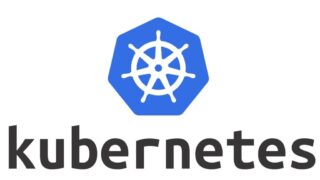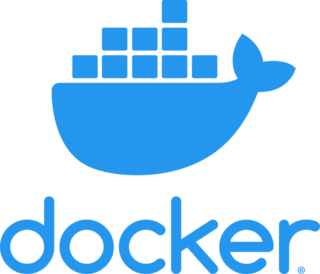What is Kubernetes?
Kubernetes is a container orchestration platform for planning and automating the deployment, management, and scaling of applications. Also known as “kube” or “k8n”. Today, large containerized ecosystems are evolving into a general purpose computing platform and ecosystem. This ecosystem enables organizations to deliver a highly efficient Platform-as-a-Service (PaaS) that addresses multiple infrastructure and operational tasks and issues related to cloud development, so development teams can focus solely on coding and innovation.

Containers are executable software units in which application code, along with OS libraries and dependencies, is packaged in common ways so that it can be run anywhere on the desktop, traditional IT, or in the cloud.
What is Container?
Containers take advantage of a form of operating system (OS) virtualization that allows multiple applications to share a single instance of an operating system by isolating processes and controlling the amount of CPU, memory, and disk these processes can access. Because they are smaller, more resource-efficient, and more portable than virtual machines (VMs), they have become the de facto computing units of modern cloud native applications.
Containers, Virtual Machines and Traditional Infrastructure
As the ultimate in the continuum of IT infrastructure automation and abstraction, containers may be easier or more useful to understand.
In traditional infrastructure, applications run on a physical server and take all the resources they can get. This teaches you to run multiple applications on a single server and hope that one does not consume the resources of the others or allocate one server per application which wastes resources and cannot scale 🙂
Virtual machines (VMs) are servers that are abstracted from real computer hardware and allow you to run multiple VMs on a single physical server or spanning multiple physical servers. Each virtual machine runs its own operating system, and by isolating each application in its own virtual machine, you can reduce the chance of applications running on the same underlying physical hardware from interfering with each other. Virtual machines use resources better and are much easier and more cost-effective to scale than traditional infrastructure. You turn off the virtual machine when you no longer need to run the application.
Container structures take this abstraction to a higher level; In particular, in addition to sharing the underlying virtualized hardware, they also share an underlying, virtualized OS kernel. Containers offer the same isolation, scalability, and availability as virtual machines, but use less space than virtual machines because they don’t carry the load of their own OS instance. They are more resource efficient; They allow you to run more applications on fewer machines (virtual and physical) with fewer OS instances. Containers can be moved more easily across desktop, data center and cloud environments. It is also an excellent choice for Agile and DevOps development applications.
What is Docker?
Docker is the most popular tool for building and running Linux® containers. While the first container types were released decades ago with technologies like FreeBSD Jails and AIX Workload Partitions, containers were liberated in 2013 when Docker introduced a new developer-friendly application.
Docker (Docker Inc.) started as an open source project, but today it has also grown into a commercial container toolkit based on the open source project (and bringing these improvements back to the open source community). Docker is built on traditional Linux container (LXC) technology, but provides more granular virtualization of Linux kernel processes and adds features that make it easier for developers to create, deploy, manage, and secure containers.
Although alternative container platforms such as Open Container Initiative (OCI), CoreOS, and Canonical (Ubuntu) LXD exist today, Docker is so widely used that it is almost synonymous with container and sometimes confused as a competitor to complementary technologies such as the following.

Container Orchestration with Kubernetes
As containers proliferate, operations teams need to program and automate container deployment, networking, scalability, and availability. Thus, the need for container orchestration arose. While other container orchestration options initially gained traction, Kubernetes quickly became the most widely adopted. Kubernetes was the fastest growing project in open source software history.
Developers have chosen and continue to choose Kubernetes for its broad functionality, growing ecosystem of open source support tools, support and portability across cloud service providers. All leading public cloud providers offer fully managed Kubernetes services, including Amazon Web Services (AWS), Google Cloud, IBM Cloud and Microsoft Azure.
So What Does Kubernetes Do?
Kubernetes schedules and automates container-related tasks throughout the application lifecycle, including the items listed below.
Distribution
Deploys a certain number of containers to a designated host and makes them run in the desired state.
Service discovery
Kubernetes can automatically open a container to the internet or other containers using its IP address or DNS name.
Storage provisioning
Use Kubernete to assign local or cloud storage as needed by your containers.
Load balancing
Based on CPU usage or custom metrics, Kubernetes load balancing can distribute workload across the network to maintain performance and stability.
Autoscaling
Kubernetes autoscaling can create new workloads to handle the additional workload when there is an increase in traffic.
Self-healing for high availability
When a container fails, Kubernetes can automatically restart or replace it to avoid downtime. It can also remove containers that don’t meet your health check requirements.
Kubernetes vs. Docker
While Kubernetes is an alternative to Docker Swarm, it is not an alternative or competitor to Docker itself. If you’ve embraced Docker and are building large-scale Docker-based container deployments, Kubernetes orchestration is the next logical step for managing these workloads.
Share this blog post on social media!
Contact us for more information about Kubernetes!

